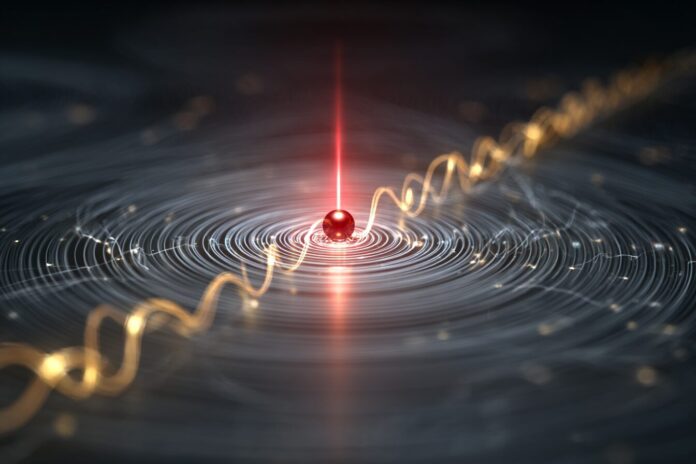The frontiers of quantum physics have just been pushed further, as scientists at CERN have announced the creation of the first-ever antimatter qubit. This remarkable achievement not only spotlights how little we truly know about the quantum world but also promises new insights into the very reasons our universe looks the way it does. Because this breakthrough opens up novel experimental approaches, researchers are now empowered to explore the boundaries between matter and its elusive counterpart.Most importantly, this discovery challenges our pre-existing notions of quantum mechanics. The results may ultimately lead to developments in quantum computing and high-precision measurements, thereby influencing both academic research and applied technologies. Therefore, exploring the nuances of antimatter qubits could redefine our understanding of nature at its most fundamental level.
What is an Antimatter Qubit?
To fully grasp the significance of the antimatter qubit, we must first understand the basics of quantum information. A qubit, or quantum bit, is the fundamental unit of quantum computing that can exist in multiple states simultaneously, in contrast to classical bits that are either 0 or 1. Because qubits can exist in a state of superposition, they are capable of processing a vast amount of information at once.Moreover, until now every qubit has been constructed from ordinary matter like electrons or photons. In this breakthrough, however, scientists turned to antimatter, whose particles mirror their matter counterparts but with opposite electrical charges. This distinction, stemming from the principle of charge-parity-time (CPT) symmetry, is particularly fascinating because it asserts that despite their differences in charge, matter and antimatter should behave under identical physical laws. Therefore, the advent of antimatter qubits paves the way for testing these symmetry principles in unprecedented ways.
The CERN Breakthrough: Trapping and Flipping Antiprotons
Physicists collaborating on the BASE (Baryon Antibaryon Symmetry Experiment) at CERN have achieved something extraordinary by trapping a single antiproton in a well-controlled quantum superposition. Using the advanced method of coherent quantum transition spectroscopy, researchers managed to flip the spin state of the antiproton, allowing it to oscillate between two orientations for nearly a minute. This level of control over an antimatter particle is something that could only have been imagined a few years ago, as detailed in research shared by Space.com.Because of the sophisticated trapping techniques utilized, the particle’s nuclear magnetic moment was manipulated with incredible precision. This method is reminiscent of flipping a bar magnet in a designed magnetic field, which is both elegant and technically advanced. Besides that, such meticulous control over antimatter opens fresh opportunities for high-precision studies in fundamental physics, as also noted by CERN’s latest updates [CERN].
Why Is This Such a Big Deal?
The implications of creating an antimatter qubit are extensive and exciting. Most importantly, this achievement opens the door to examining the subtle differences between matter and antimatter. Current scientific theory suggests that the Big Bang should have produced equal quantities of matter and antimatter; however, our universe predominantly consists of matter. Therefore, the precise study of antimatter qubits could provide important clues to this enduring cosmic mystery.Furthermore, the unique properties of antimatter qubits enable researchers to perform ultra-precise comparisons that were previously beyond reach. Because these comparisons can uncover minute discrepancies in behavior, they might explain why the universe did not collapse into radiation after the Big Bang. Besides that, advancements in quantum sensing and communication technologies may also benefit from these experimental insights, as further explained in findings by ITC.ua.
How Does This Change Quantum Science?
The quantum realm is inherently mysterious, where particles can be in two places at once and behave in seemingly unpredictable ways. Because the creation of an antimatter qubit introduces a completely new variable to quantum experiments, it expands the scope of research in this field. With this technique, future experimentation could involve universal quantum simulations that combine both matter and antimatter qubits. An excellent demonstration of this potential is offered in an extensive overview available from Coroflot.Moreover, such experiments provide new avenues to test the limits of quantum theory. Because scientists are now capable of manipulating an antimatter particle’s spin state so precisely, they can simulate exotic states of matter. This research not only deepens our knowledge of quantum mechanics but also paves the way for innovative quantum computing and sensing applications that could revolutionize the field.
The Road Ahead: What Comes Next?
Looking to the future, the creation of the antimatter qubit offers a bold vision for the evolution of quantum science. Scientists now have a powerful tool to investigate the fundamental symmetries of nature with an accuracy that was previously unattainable. Because of the groundbreaking techniques demonstrated by the BASE team at CERN, future experiments could unravel mysteries that have perplexed physicists for decades. Most importantly, this achievement fosters optimism that new quantum technologies could soon emerge from these fundamental studies.In addition, this discovery also provides a stepping stone for developing ultra-sensitive detectors and novel applications in quantum communication. Therefore, while fully functional quantum computers that utilize antimatter qubits might still be distant, the advancement itself is an invigorating leap forward in quantum research. As noted by experts discussing Einstein’s provocative insights into quantum entanglement [Backreaction], the unexpected continues to define and challenge our scientific boundaries.



